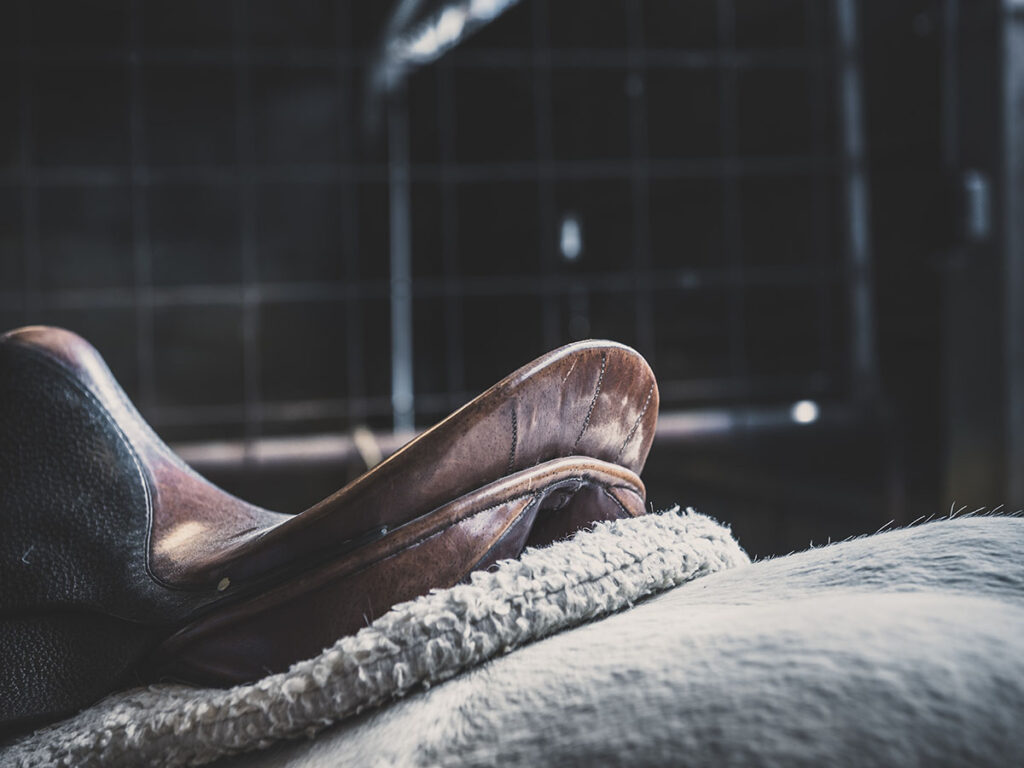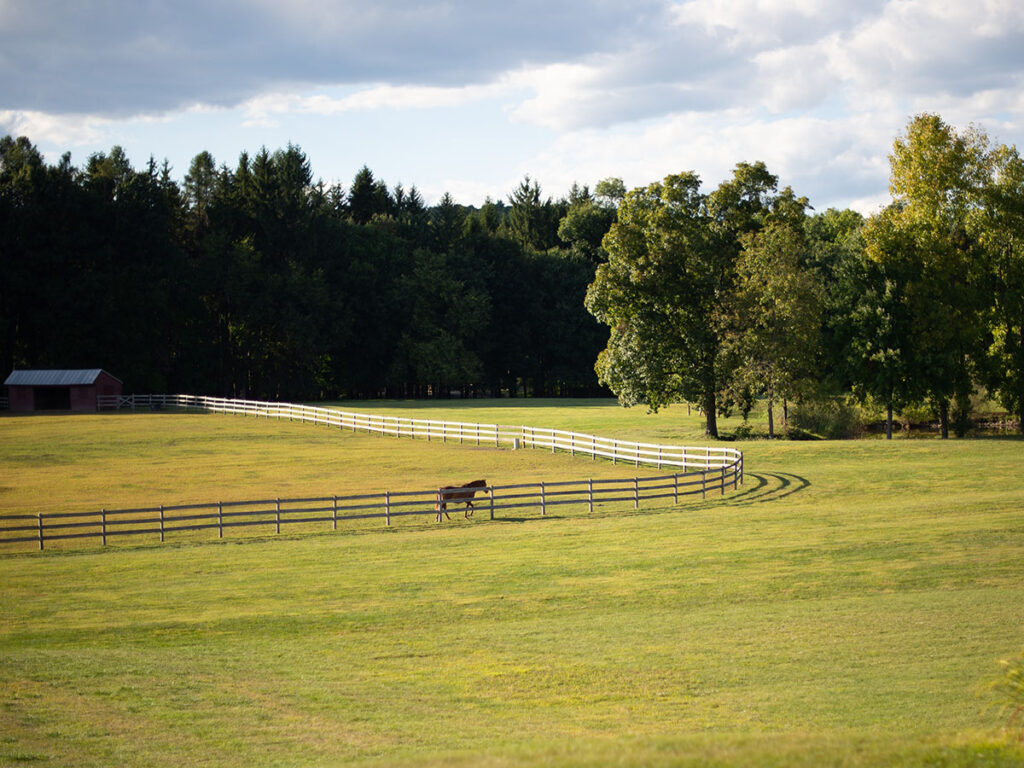Saddle pad maintenance and cleaning should be at the forefront of every rider’s mind. Not only can a dirty saddle pad be unsightly, but it can also negatively impact the health and comfort of your horse. What are the best methods however for washing and caring for your saddle pads?

This is a comprehensive guide on how to wash and clean a variety of saddle pads, including General Purpose Saddle Pads, Velvet Saddle Pads, Cotton Saddle Pads, Polyester Saddle Pads, Wool Saddle Pads, Felt Saddle Pads, Numnahs, Jump Pads, Half Pads, Linen Saddle Pads, Printed Saddle Pads, Patterned Saddle Pads, Hunt Pads, Dressage Pads, Bamboo Saddle Pads, Sheepskin Saddle Pads, Faux Fur Saddle Pads, and Faux Sheepskin Saddle Pads.
By following these tips and recommendations, you can ensure your saddle pads stay clean and fresh, and your horse stays comfortable and clean.

How Often Should You Wash Your Saddle Pad?
The frequency of washing your saddle pads depends on a variety of factors, such as how often the saddle pad is used, the intensity of the activity, and the weather conditions.
As a general rule of thumb, it’s recommended to wash your saddle pad after every use. However, this may not always be necessary, especially for saddle pads that are used infrequently or for less intense activities.
For example, a pad used on a quick hack in the winter on a clipped horse may not need to be washed as often as a pad used for an intensive lesson in hot and sweaty conditions.
How to Wash a Saddle Pad?
There are two main methods when cleaning a saddle pad washing by hand and washing in a washing machine.
To wash a saddle pad by hand, you’ll need a bucket or basin, mild detergent, and warm water. First, soak the saddle pad in the water and detergent for a few minutes, then gently scrub any dirt or stains with a soft brush. Rinse the pad thoroughly and hang it up to air dry.
For washing in a machine, it’s important to use a gentle cycle with cold water and mild detergent. Avoid using bleach or fabric softener as this can irritate a horse’s coat and skin.
Once the cycle is complete, hang the saddle pad up to air dry, but avoid placing it in direct sunlight or high heat to avoid shape distortion and colour fade.

How to Clean a Sheepskin Saddle Pad?
Sheepskin saddle pads require special care and attention when it comes to washing and cleaning. It’s important to use a gentle, sheepskin-specific detergent if you can invest in one and avoid using fabric softener or bleach.
To wash a sheepskin saddle pad, it’s recommended to hand wash it in cool water with the detergent and then rinse it thoroughly. Gently squeeze out any excess water and then air dry the pad.
It’s important to avoid exposing the pad to high heat or direct sunlight, as this can damage the sheepskin and cause it to become hard and brittle.
Tips for Maintaining and Extending the Life of Your Saddle Pads
In addition to properly washing and cleaning your saddle pads, there are additional steps you can take to extend their life and maintain their cleanliness.
One tip is to always let your saddle pad air out after each use, as this can help prevent bacteria and odours from accumulating. Additionally, it’s important to store your saddle pads in a clean, dry, and well-ventilated area when not in use. Avoid storing them in damp or humid conditions, as this can lead to mould and mildew growth.
Proper saddle pad maintenance and cleaning are essential for the health and comfort of your horse.
By following the tips and recommendations outlined in this article, you can ensure your saddle pads stay clean and fresh, and your horse stays happy and healthy.
Remember to choose the right cleaning method for your specific saddle pad type, and take steps to maintain and extend the life of your saddle pads. With the right care and attention, your saddle pads will last longer.

Tips for Cleaning Saddle Pads by Hand
When it comes to cleaning your saddle pads, hand-washing can be a great option for those who want to take extra care in maintaining their pads.
Here are some recommended steps for hand-washing your saddle pad:
- Fill a large basin or bathtub with lukewarm water and a small amount of mild detergent.
- Place the saddle pad in the water and gently agitate it with your hands to ensure all areas are being cleaned.
- Pay special attention to any particularly dirty or stained areas, and use a soft-bristled brush to gently scrub them.
- Drain the soapy water and refill the basin with clean water to rinse the pad.
- Gently squeeze out excess water and lay the pad flat to dry.
While machine washing can be a quick and convenient option, hand washing offers some benefits as well. Hand-washing allows you to monitor the cleaning process more, ensuring that your saddle pad is being treated gently and not being subjected to harsh cycles or detergent.
Additionally, hand-washing can be particularly useful for pads made from delicate materials like velvet or wool, which may be more prone to damage in a machine. By taking the time to hand-wash your saddle pads, you can help ensure that they stay in top condition for longer.

Can You Put a Saddle Pad in the Washing Machine?
If you don’t have the time or resources to hand wash your saddle pad, you may be wondering whether it’s safe to put it in the washing machine.
The answer is yes, in most cases, it is safe to machine-wash a saddle pad. However, before you toss your saddle pad into the washing machine, there are a few things you should keep in mind.
First, always check the care label on your saddle pad to make sure it can be machine-washed. Some saddle pads, such as those made of wool or other delicate materials, may require special care or professional cleaning.
Next, make sure to fasten any straps or buckles on the saddle pad to prevent them from getting tangled in the washing machine. Use a gentle cycle and a mild detergent to avoid damaging the fabric or padding.
Additionally, avoid washing your saddle pad with other items, especially those with zippers or other sharp objects that could damage the pad.
After washing, air dry the saddle pad by laying it flat on a clean, dry surface. Avoid hanging the saddle pad to dry, as this can cause the padding to shift and the fabric to stretch out of shape.

Next, let’s take a look at some tips for washing specific types of saddle pads
General Purpose Saddle Pad – General-purpose saddle pads are typically made of cotton or polyester and can be washed in a washing machine using a gentle cycle with a mild detergent. Make sure to remove any hair or debris from the pad before washing. To remove stubborn stains, pre-treat the affected area with a stain remover or baking soda and vinegar mixture before washing.
Velvet Saddle Pad – Velvet saddle pads require special care when washing to prevent damage to the delicate fabric. Hand washing with cold water and a mild detergent is recommended. Avoid using hot water, harsh detergents, and fabric softeners. Gently squeeze the water out of the pad, and air dry it flat away from direct sunlight and heat.
Cotton Saddle Pad – Cotton saddle pads are easy to wash and care for. Simply toss them in the washing machine with a mild detergent and wash them on a gentle cycle. Avoid using bleach or fabric softeners, and air dry the pad flat or on a clothesline away from direct sunlight.
Polyester Saddle Pad – Polyester saddle pads can be washed in a washing machine with a gentle cycle and mild detergent. However, avoid using fabric softeners and bleach as these can damage the pad’s fibres. Air dry the pad flat or on a clothesline away from direct sunlight.
Wool Saddle Pad – Wool saddle pads require extra care when washing to prevent shrinkage and damage to the fibres. Hand washing with cold water and a mild detergent is recommended. Avoid using hot water, fabric softeners, and bleach. Gently squeeze the water out of the pad, and air dry it flat away from direct sunlight and heat.
Felt Saddle Pad – Felt saddle pads can be washed in a washing machine on a gentle cycle with a mild detergent. Avoid using bleach and fabric softeners, and air dry the pad flat or on a clothesline away from direct sunlight.
Numnah and Jump Pad – Numnah and jump pads can be washed in a washing machine with mild detergent on a gentle cycle. To maintain their shape, use a mesh wash bag or pillowcase to prevent them from getting tangled. Air dry the pad flat or on a clothesline away from direct sunlight.
Half Pad – Half pads can be hand washed with mild detergent and cold water. Gently squeeze the water out of the pad and reshape it while it’s still wet. Avoid using hot water and fabric softeners, and air dry the pad away from direct sunlight and heat.
Linen Saddle Pad – Linen saddle pads can be washed in a washing machine with mild detergent on a gentle cycle. Avoid using bleach and fabric softeners, and air dry the pad flat or on a clothesline away from direct sunlight.
Printed and Patterned Saddle Pad – To prevent fading of printed and patterned saddle pads, hand washing with cold water and mild detergent is recommended. Avoid using hot water, bleach, and fabric softeners. Gently squeeze the water out of the pad, and air dry it flat away from direct sunlight and heat.
Hunt and Dressage Pad – Hunt and dressage pads can be washed in a washing machine with a gentle cycle and mild detergent. Avoid using bleach and fabric softeners, and air dry the pad flat or on a clothesline away from direct sunlight.
Bamboo Saddle Pad – Bamboo saddle pads can be washed in a washing machine with mild detergent on a gentle cycle. Avoid using bleach and fabric softeners.

Overall, while machine-washing a saddle pad is generally safe, it’s important to take precautions depending on its materials to ensure that your saddle pad remains in good condition. With proper care and maintenance, your saddle pad can last for many years and provide your horse with a comfortable and secure ride.




